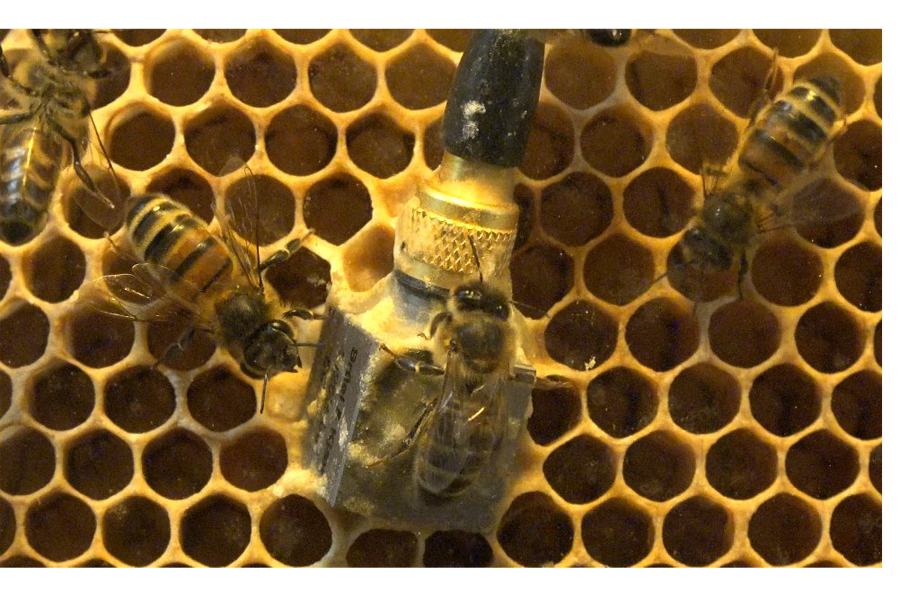Vibrating bees give dizzying clues about their hives
Loading...
A new device might help struggling bee colonies get their buzz back.
Using accelerometers, scientists from Nottingham Trent University in England developed a way to "read" the vibration patterns in bees’ dance language. These vibrations, say the scientists, give clues to the well-being of the hive.
"We [wanted] to develop a tool to find out the status of honeybee colonies – if the colony is starving, if there is a lot of foraging going on, or if the bees are preparing to swarm," Dr. Martin Bencsik said in a press release.
"An accelerometer is like a microphone, but instead of sounds, it collects vibrations," explains Dr. Martin Bencsik, a scientist at the School of Science & Technology at Nottingham Trent University, in an email to The Christian Science Monitor.
"If you put your hand on a cat that is purring, you will feel clearly the vibrations coming from the body of the cat. It is these vibrations that an accelerometer measures," he writes.
The accelerometers don't disturb the bees, he said in a press release. "The bees used the honeycomb cells right next to the accelerometers normally, for pollen, brood or honey, so they don't seem to mind them," he said.
Their device, still in the prototype phase, embeds two ultrasensitive accelerometers in a honeycomb to allow scientists and beekeepers to monitor hive health without interfering with the hive's natural rhythms. Michael-Thomas Ramsey, one of Dr. Bencsik's students, presented the scientists' initial findings at a meeting of the Acoustical Society of America this week in Florida on Thursday.
The accelerometers detect subtle changes in bees’ vibration patterns, or "dances," including the common "begging signal" – a dance performed by bees from the home colony to persuade a foraging bee to regurgitate its food for them.
The begging signal, and dances similar to it, can reveal the complex relationships between different members of a hive. If the accelerometers correctly interpret them, it could help beekeepers protect their hives from colony collapse disorder (CCD), a mysterious affliction that leaves hives without enough worker bees and nurses to provide for the remaining queen.
Bencsik's team found that the begging signal may serve a more complex purpose than a simple desire for food, which corroborates other recent research. It could be a more general "Stop what you're doing" message, they found.
Begging signals sharply decrease during the winter, they discovered, while swarming activity increases during the summer. Because swarming can prepare a queen bee and her workers to leave their current hive in search of a new home, the scientists hope their findings will help solve the mystery of CCD.
"Our research contributes to [understanding] how honeybees cope with group decisions, made on large scales, [among] typically 20 to 40 thousand individuals," Bencsik says. "Like us humans, honeybees live in societies, and often, important decisions have to be taken for the entire society, quickly and intelligently."








